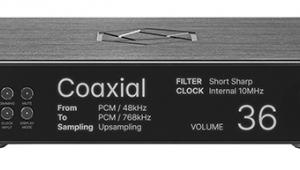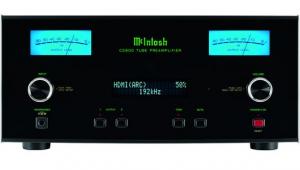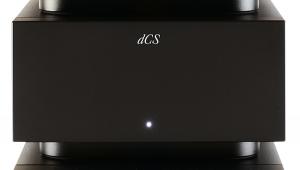Cambridge Audio Dacmagic (£200)
There’s some controversy over who produced the first separate digital-to-analogue converter for CD users, but the honour is most convincingly claimed by Arcam, which launched its original Black Box back in 1989.
By 1991, you could buy something smaller and cheaper, though as it came from California it had a grand-sounding name. The Audio Alchemy Digital Decoding Engine was the size of a small paperback, with a rudimentary plug-top power supply. In this country, Cambridge Audio wasn’t far behind, launching its original DacMagic in 1994.
Over the next few years, the market for separate DACs withered and died, but then revived with the computer audio revolution that has made CD just one of the range of digital music sources available. So for 2008 Cambridge reintroduced its DacMagic name with a new and far more sophisticated product.
As with the Azur range of CD players, the current DacMagic is based on the proprietary ATF (Adaptive Time Filtering) asynchronous upsampling technology from Anagram of Switzerland. It automatically accepts 32, 48 and 96kHz-sampling data as well as the 44.1kHz of CD, via USB, coaxial or TosLink connections, and upsamples to 24-bit/192kHz. There are balanced (XLR) outputs as well as the standard unbalanced (phono) outputs and, as a bonus, the DacMagic offers a choice of three different digital filter settings. These are described as Linear Phase, Minimum Phase and Steep.
COULD THIS BE MAGIC
So what’s the secret of the DacMagic box, and how do those three user filter settings compare? To find out I used a Rega Apollo player as a transport, putting the DacMagic between this and a Classé CAP-2100 integrated amplifier.
A telling comparison came with a favourite Chesky disc, Marta Gomez’s Entre Cada Palabra [Chesky JD301]. Starting with the Linear Phase Filter, this recording came over extremely well. The rhythmic life of the acoustic instruments just came through naturally, retaining both integrity and clarity in the big acoustic space around them without becoming muddy.
Moving on to the Minimum Phase setting, there was a greater sense of air around those percussion sounds, a better overall feeling of the big acoustic, and more image depth. Marta’s voice took on a more velvety quality, seeming now to dance fleetingly along with the lyrics rather than declaiming them.
With the Steep filter setting, you still heard the voice, for example, plus the contribution of the recorded acoustic, but it was as if there was some subtle discontinuity between the two. You could not quite relax with the sense of wholeness and ease of the Minimum Phase setting.
Sticking with acoustic sounds, but of a different kind, I loaded up the LSO’s Enigma Variations, recorded in the Barbican with Sir Colin Davis [LSO Live LSO 0609]. Starting with the Linear Phase position, I felt that sound was well balanced with a poised, precise quality, very well controlled in the bass, and with very good feeling of solid left/right imaging.
Switching to the Minimum Phase filter gave a definitely sweeter sound, free of a previously-noted very slight coarsening or grain in the treble and giving an impression of more air around the string sounds. The string playing had a better feeling of articulation too.
Moving to the Steep filter setting changed this a little, as if taking a somehow sterner, objective view of the score, an effect I can only describe as more tense, with a sort of slight tightening up and loss of ‘air’.
GIANT KILLER
With electric instruments, and Jennifer Warnes’ Famous Blue Raincoat [RTHCD 5052], I again preferred the Minimum Phase setting for the way the performers sat more naturally in position in the soundstage. With the Steep filter position, rhythms seemed rather more driving than flowing, with less insight into the techniques and tricks of that complex production.
Despite its small physical size, this is a potent DAC which can do a lot, for a lot of systems. Its compactness and low price might mean that it won’t often be tried as an upgrade to more expensive players or transports. But it deserves to be. Give the Cambridge a chance and it could prove to be a giant-killer.
VERDICT
Designed for the user who might want better audio from games or other sources as well as CD, the compact DacMagic delivers excellent sound, and will satisfy the more dedicated audiophile too. With a lucid, flowing sound, especially on the Minimum Phase filter setting, it could bring new life to many older CD players, even those well above its price class.
Originally published in the February 2009 issue


























































